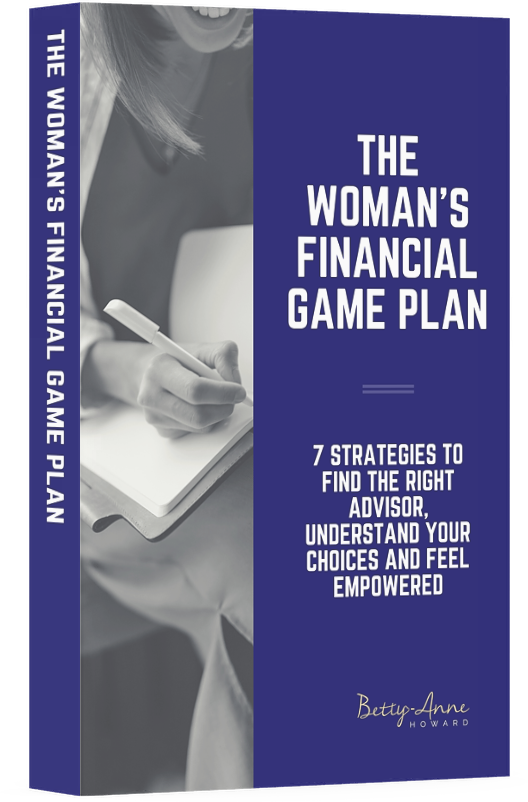
The first person decided to end his life which pains me a great deal. Like most family and friends (the ones left behind when life has abruptly ended in this way), you ask yourself; is there anything else we could have done that would make a difference in their lives to keep them alive? We’ll never know.
Both friends were leaders in our industry in different ways. Rita was a legend unto herself, a highly regarded and respected woman in financial services. Unfortunately, there are still too few women in this industry, and thankfully that is changing. Rita worked into her 80s with no signs of slowing down. Her clients and colleagues will be forever grateful and appreciative of all she did for us.
I met Chris when I walked into my first insurance course, the one I had to take to become licensed as an insurance agent, and he was my instructor. He went on to become a friend of mine, a mentor, and a creative source of support whenever I would question how well I was doing as an entrepreneur and a woman in this business. He was always a source of support and encouragement, and I tried to be the same for him over time.
The thing is, retirement can be this elusive signpost that brings with it different perceptions, expectations, and intentions, all of which need to be addressed as part of retirement planning. Even the words themselves seem devoid of emotion, and yet how we feel about retiring and how we envision our retirement along with our hopes and dreams for this new chapter in our lives are key ingredients to the planning of our retirement.
I keep reminding myself that, even though there are some planning issues beyond our control (like staying alive), we must have hope for the future. I like Brené Brown’s description of hope from her terrific book, Daring Greatly:
“We have the ability to set realistic goals (I know where I want to go). We are able to figure out how to achieve those goals, including the ability to stay flexible and develop alternative routes (I know how to get there, I’m persistent, and I can tolerate disappointment and try again). We believe in ourselves (I can do this!).”
This has helped me a great deal in sitting down and writing this blog. In addition, even though I am profoundly sad, I am reminded of, again, Brené Brown’s wise words “To be human is to know sadness. Owning our sadness is courageous and a necessary step in finding our way back to ourselves and each other.”
I am thus courageously moving on with this blog because I have hope. Retirement can and should be a joyful and happy time for most of us. Let’s talk about how we can make that happen for you.
What does your retirement look like?

This is important for you and your financial planner to know. Why do we as Financial Planners ask this question? Because each aspect of how you envision your retirement has a different price tag attached to it, and whenever there’s money involved, it’s good to plan for those lump-sum amounts. For example, depending on where your grandkids or family lives, you may need to plan for how often you hope to visit them, along with the associated costs.
What we want to do is come up with a retirement plan that best reflects what you want to be doing once you retire. And here’s something to consider as part of the traveling question, given that your needs now may change over time throughout your retirement.
The “Go-Go Years” and the “No-Go Years”

Once Aunt Verna turned 80, she was less interested in traveling and wanted to spend more time with family and friends who lived near her. She decided this for various reasons, but mostly because she was feeling less mobile after she had broken her hip in her late 70s. Given the challenges accompanying her decreased mobility, she adapted and decided she wanted to remain closer to home.
Keeping this in mind, many of our clients want to retire early and travel as much as they can while they have good health and the wherewithal to get around another country. So many people, ourselves included, think in terms of traveling globally while we can and then sticking closer to home when we can’t. Each mode of travel, if you will, has a corresponding cost attached to it and can easily be part of your overall retirement planning.
Another significant factor is the stark realization that if you are in a coupled relationship, one or both of you could end up with health issues that would impede your travel plans. Many clients of ours have said quite explicitly that they want to travel as much as they can, while they can.
Of course, Covid put a real damper on those plans, which is why so many people have additional savings right now. This is beneficial because of the current economic situation with higher interest and inflation rates.
Factors Beyond our Control for Retirement Planning

For example, during the “decumulation” phase of your retirement, which refers to drawing down on your RRSPs, TFSAs, RRIFs, LIRA, or Open/Non-Registered Portfolio, taking money out of your investments when the markets are down significantly, has a damaging effect on your capital if we experience one or two negative years running in the early stages of this drawdown. The good news is that you can plan for that by using the cash-wedge strategy as discussed in part 1.
Heading into a recession can impact your retirement goals by slowing down the economy, which then impacts the profits of the companies you may own inside your investments – which then results in lower returns. We like to use very conservative rates of return when factoring in what we can expect to generate as income from our client’s portfolios, along with using other strategies to plan for this inevitability.
Higher interest rates are especially tough if you still have a mortgage or any other kinds of debt you are bringing with you into your retirement. We try our best with our clients to plan for all debts to be paid off by the time you retire.
A Dynamic vs. Static Process

We like to know what, if any, adjustments need to be made to the plan to realign and make changes to accommodate, for example, new goals you’ve set for the coming year or gifts of money that you’ve received, and how best to allocate those funds relative to your plans.
Retirement planning is rarely a “one and done” endeavor. Things are always changing in your life, the financial service world, and the markets, which means that we need to complete a regular review of how you’re doing towards your goals so we can make any changes or adjustments to your plan.
It astounds me when I think about most Investment Advisors who have no idea what their client’s plans are for the future and how best to align their risk levels to those goals. For our clients, we need to know and understand the time frame, objectives for the money, and your risk profile which includes your ability to assume risk in your portfolio and also establish a contingency plan by reviewing all the things that can go wrong and get in the way of reaching your goals.
Charts and Numbers Alone Do Not Make a Retirement Plan

For example, currently, we are working with a couple who are fully retiring in September. We weren’t sure until just recently if their retirement was going to start this year or next year. We’ve been building up cash inside their RRSPs for the cash wedge strategy, and yet one of them has been working this year with a fairly high income, so we don’t want to add to their income by using their RRSPs for the remainder of the year. Neither do we want to use the Spousal RRSP because of the “attribution rules.”
All of these accounts have a lot of money in them to generate income, and we’re not entirely sure we want to start using their TFSA’s for income given the current state of the markets (which are in “Bear Territory” down 20% from peak to trough). So, we are factoring in income tax considerations, the state of the markets, how much cash is available, and in what investment vehicle. We are pulling together all the pieces of the puzzle so we can not only help our clients understand fully all the factors we are considering but also go beyond just what the retirement planning software has generated.
We use the data we have from the planning tool as information to further our and our client’s understanding of the best way forward, the best plan for now, with adjustments to be made as we go along.
Income Planning vs. Life Planning

But another very important starting place is to imagine what you would like your retirement to look like by “beginning with the end in mind.” This concept is from Dr. Stephen R. Covey, it’s one of his 7 habits of highly effective people. The habit is based on the principle that all things are created twice: once in your mind and then again in the physical world; one follows the other.
Keeping this in mind, we want you to use your imagination and begin thinking about what you’re going to do in retirement and how do you want to spend your time? If you have a spouse or partner, how do they want to spend their time? Lots of people have no idea how they actually want to spend their time during retirement because they’ve been working so hard; it’s the absence of having to go to work every day that holds the greatest appeal.
We hear this often; “I can’t wait to be retired so I can do whatever I want with my time.” But the important follow-up question is – what do you want to do with your time? This can take some exploring.
I remember when I started working with a College Professor who was about to retire, and I asked her what her dreams were. She looked at me with a blank stare and said, “I have no idea, no one has ever asked me that question, and I’ve always been doing things for other people, so I have no idea!”
The great news is that further discussion started her thinking about and then sharing with me all of her hopes and dreams for her retirement. Every year when we completed her annual review, she’d update her dreams for the following year. She would share with me her travel plans to go abroad (pre-Covid), her desire to take courses, and even lessons to learn how to play pool, she was becoming quite the pool shark!
Your Future Is Now

It has also given me the courage, hope, and determination to ensure that more people think deeply about their lives, ask the harder questions, and set up their retirement planning focused not only on income but on living.
Our lives are now. Our future is today. Our tomorrow is not promised, but we can plan for it, and planning brings hope. Our hopes and dreams can be ignited by asking ourselves these questions as we look into our future.
“The very least you can do in your life is figure out what you hope for. And the most you can do is live inside that hope. Not admire it from a distance but live right in it, under its roof.”
– Barbara Kingsolver
Enjoyed this article? You might also enjoy:
Estate Planning: Putting Together The Pieces of the Puzzle
Understanding Cash Flow: Stewardship, Awareness, and An Embarrassing Story
Invisible Heroines: Celebrating Canadian Women Philanthropist’s Stories, Lives, and Legacy






0 Comments